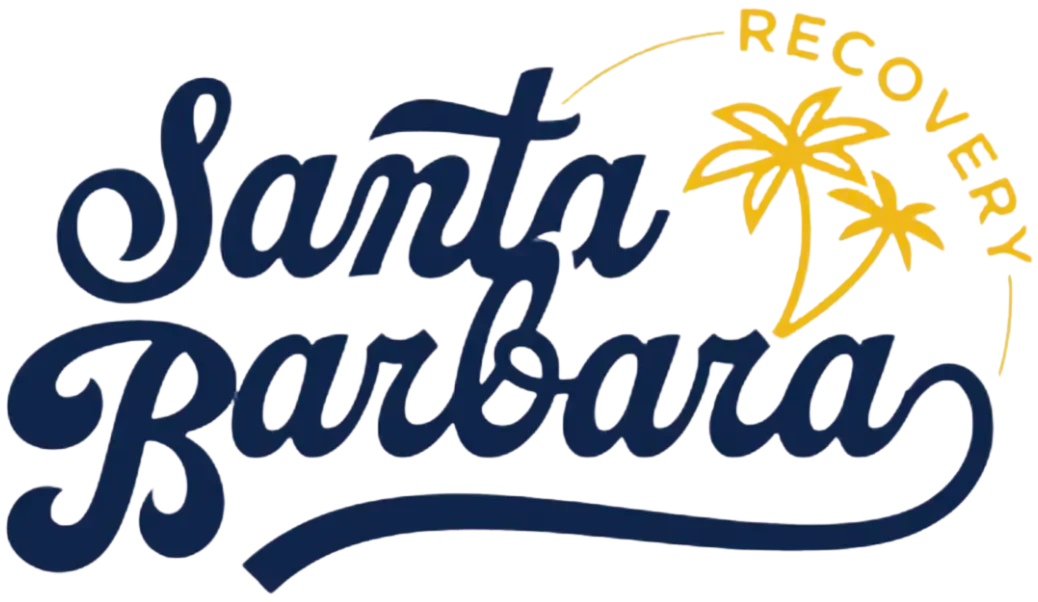Research shows inpatient rehabilitation programs offer your best chance at recovery, with success rates of 85-95% over 9 months when following evidence-based protocols. You’ll find that facilities using cognitive behavioral therapy, medication-assisted treatment, and family involvement achieve markedly better outcomes. Staff-approved discharges improve 12-month abstinence rates to nearly 60%, while virtual outpatient programs maintain 70% success rates. Understanding these success factors can help guide your treatment choice for lasting recovery.
Understanding Success Rates Across Different Treatment Programs

Treatment success rates vary considerably across different drug addiction recovery programs, with outcomes heavily influenced by both the substance type and treatment approach. You’ll find that inpatient treatment shows the highest success rates at 85-95% over a 9-month period, while outpatient programs achieve 45% success rates for alcohol and marijuana dependencies. Research indicates that medication-assisted treatment significantly enhances recovery outcomes. Modern addiction treatment recognizes that chronic illness requires comprehensive, long-term care approaches.
Specific substances show distinct recovery patterns: alcohol treatment maintains 70% sobriety after 9 months, while methamphetamine recovery presents more challenges with 20-30% success rates. Your chances of recovery improve greatly with personalized treatments that match your specific needs. It’s important to note that 40-60% of individuals experience relapse during their recovery journey. Research shows that long-term success depends heavily on aftercare support, including family involvement and ongoing management. Programs in Florida demonstrate particularly promising results, with over 70% of patients completing their treatment protocols successfully.
Patient-Reported Outcomes in Alcohol Recovery Centers
When you examine patient-reported outcomes from alcohol recovery centers, you’ll find that success extends well beyond initial treatment, with 89% maintaining sobriety at one month and 76% at three months post-discharge. Your chances of sustained recovery increase drastically through family support networks and staff-approved discharge protocols, which reduce relapse risk by 50%. The evidence shows that 80% of patients report improved general health and better relationships, demonstrating that recovery programs deliver measurable benefits across multiple life domains. Programs incorporating cognitive behavioral therapy show particularly strong results, with over 90% of facilities nationwide utilizing this evidence-based approach. Virtual outpatient treatment has proven particularly effective, with 69.6% remaining abstinent at the one-year mark when following staff-approved discharge plans. Treatment centers that view addiction as a chronic disease report higher success rates through comprehensive medical and behavioral interventions.
Success Beyond Initial Treatment
Understanding long-term success in alcohol recovery extends far beyond the initial treatment phase, with compelling evidence supporting positive outcomes across multiple metrics. Patient-specific care plans and strategic discharge planning outcomes demonstrate remarkable effectiveness, with 89% of patients maintaining sobriety at one month and stabilizing above 70% by nine months post-treatment.
Key factors contributing to sustained recovery include:
- Staff-approved discharges, which improve 12-month abstinence rates to 59.5% and reduce relapse risk by 50%
- Detailed aftercare coordination, integrating family support and outpatient services
- Quality of life improvements, with 80% reporting amplified physical and mental health, and 91% expressing satisfaction with specialized program care
These statistics underscore the importance of structured, evidence-based approaches in achieving lasting recovery success, particularly when combined with personalized treatment strategies and continuous support systems.
Real Voices, Real Results
Countless personal accounts from alcohol recovery centers reveal the transformative power of evidence-based treatment programs. Data shows that 89% of patients maintain sobriety one month after discharge, with 76% remaining abstinent at three months. You’ll find these success rates vary by region, with states like Florida achieving completion rates above 70%.
Despite regional treatment disparities, facilities that prioritize staff support during discharge see better long-term outcomes. The evidence is clear: 80% of patients report improved health and quality of life post-treatment. While less than 43% of individuals complete their programs nationally, those who do often maintain sobriety for extended periods nearly 60% remain abstinent at the one-year mark when receiving proper staff support and follow-up care.
Family Support Impact Analysis
How does family involvement revolutionize addiction recovery outcomes? Family-based assessments and therapy integration have shown remarkable success rates, with treatment adherence increasing by 30% when loved ones actively participate in the reclamation journey. Meta-analyses indicate that superior treatment outcomes persist for up to 18 months when significant others participate in recovery programs. These family-based approaches prove to be cost effective options compared to individual or mixed therapy sessions.
- Through structured CRAFT and BCT interventions, you’ll experience improved engagement and reduced relationship conflicts, leading to twice the length of sustained sobriety compared to isolated recovery attempts.
- Your family’s involvement in medication monitoring and trigger avoidance planning creates sturdy accountability mechanisms, resulting in 40% fewer substance-related hospitalizations.
- Multi-family groups and process therapy sessions help rebuild trust while teaching essential boundary-setting skills, contributing to a 20% increase in sustained employment post-recovery.
The active participation of family members provides emotional stability throughout the recovery process, fostering a supportive environment that significantly enhances treatment outcomes. These evidence-based outcomes demonstrate that family support isn’t just beneficial it’s transformative for long-term recovery success.
The Role of Medication-Assisted Treatment in Long-Term Sobriety
Research shows you’ll have enormously better recovery outcomes when combining FDA-approved medications with behavioral therapy, as this integrated approach reduces overdose risk by over 3.5 times compared to medication non-adherence. Your chances of maintaining long-term sobriety improve tremendously with medication-assisted treatment (MAT), which achieves up to 100% retention rates in controlled studies when proper protocols are followed. Despite proven effectiveness, only one in five Americans with opioid use disorder currently receive medication-based treatment. Psychosocial treatments are essential, as patients receiving behavioral interventions alongside medication demonstrate superior outcomes compared to those using medication alone. You’ll find the utmost success with ideal medication dosing for instance, medium-to-high-dose buprenorphine (7-15 mg) matches methadone’s effectiveness in treatment retention and heroin suppression. As of 2023, healthcare providers can now prescribe buprenorphine without obtaining a special waiver, making this life-saving treatment more accessible to patients.
MAT Success Rates Analyzed
The success rates of Medication-Assisted Treatment (MAT) paint a complex picture in addiction recovery, with only 20-25% of adults with opioid use disorder receiving essential medications like methadone or buprenorphine. Only 10.9 percent of patients who undergo detoxification transition to medication treatment within 14 days. While medication adherence metrics show varied induction success rates between 33-72%, the data clearly demonstrates MAT’s superiority over non-medication approaches. Studies show that methadone remains superior as the gold standard treatment option for opioid use disorder.
- You’ll find treatment success correlates strongly with duration staying in MAT for 6-12 months offers the best outcomes for sustained recovery
- Your likelihood of success may vary based on demographic factors, with treatment cost analysis showing socioeconomic status considerably impacting access to care
- If you’ve previously attempted detox, you should know that each subsequent attempt shows declining success rates, while MAT consistently demonstrates better outcomes regardless of previous treatment history
Medication Plus Therapy Benefits
While traditional addiction treatments often focus solely on abstinence, medication-assisted treatment (MAT) offers a thorough, extensive, or all-encompassing approach by combining FDA-approved medications with behavioral therapy. You’ll find that MAT considerably reduces cravings and withdrawal symptoms, allowing you to focus on your recovery trek. The program helps normalize brain chemistry while blocking the euphoric effects typically associated with opioid use.
The combination of medication and counseling provides substantial mental health benefits, reducing anxiety and depression while improving your ability to maintain employment and rebuild relationships. Family involvement in therapy sessions strengthens your support system and boosts treatment outcomes. Research shows you’re more likely to stay in treatment longer with MAT, which directly correlates with better long-term sobriety rates. Moreover, you’ll benefit from reduced overdose risks and improved social stability as you progress through your recovery trek.
State-by-State Analysis of Recovery Program Performance

Recent analyses across multiple states reveal noteworthy variations in addiction recovery program performance, with standout metrics emerging from Pennsylvania, Colorado, and Kentucky. When seeking treatment, you’ll find that geographical accessibility and culturally competent practices vary markedly by region.
- Pennsylvania ranks 8th nationally for treatment access, demonstrating strong stakeholder partnerships and extensive coverage options
- Colorado offers remarkable cost-effectiveness, with residential treatment averaging $56,413 and outpatient care at $1,705 per patient
- Kentucky leads the nation in treatment bed availability per capita, particularly focusing on opioid treatment expansion
While these states show promising results, challenges persist nationwide. You’ll need to ponder that racial disparities, funding limitations, and rural access barriers can impact your treatment success. Understanding these state-specific differences helps you make informed decisions about your recovery path.
What Makes Florida’s Rehabilitation Centers Stand Out
Florida’s expansive network of rehabilitation centers distinguishes itself through unparalleled diversity in treatment options and extensive care delivery. You’ll find 712+ facilities offering specialized programs, including telehealth integration and nutritional support, tailored to your unique recovery path.
Treatment Type | Services Offered
—————|—————-
Inpatient Care | 24/7 Medical Supervision, Detox Support
Outpatient Programs | Flexible Scheduling, Remote Therapy
Recovery Support | Life Skills Training, Sober Activities
The state’s extensive approach combines evidence-based treatments with novel support services. You’re supported by round-the-clock medical staff in climate-friendly settings, while having access to 295 intensive outpatient programs that accommodate your work-life balance. With 91 specialized detox centers and 244 methadone clinics, you’ll receive targeted care for specific substance dependencies, ensuring the highest chances of successful restoration.
Comparing Outpatient and Inpatient Treatment Effectiveness

Building on Florida’s extensive treatment setting, understanding the effectiveness of outpatient versus inpatient care helps you make informed decisions about your recovery path. Research shows residential programs achieve higher completion rates at 64.5% compared to outpatient at 51.9%, with program quality assessment indicating stronger early recovery outcomes in structured environments.
- You’re three times more likely to complete treatment in residential care, though demographic disparities exist in long-term programs
- Inpatient care provides 24/7 supervision and concentrated therapy, beneficial for severe substance use disorders
- Outpatient treatment offers real-world recovery practice while maintaining work commitments, with similar effectiveness to intensive outpatient programs for suitable candidates
Your success depends more on matching treatment intensity to your needs than the setting alone, with both options showing strong abstinence rates upon completion.
Key Factors That Drive Successful Recovery Outcomes
While each person’s expedition to rehabilitation is unique, research consistently identifies several key factors that notably improve treatment outcomes. Evidence-based approaches like cognitive-behavioral therapy and medication-assisted treatment form the foundation of successful recovery programs. You’ll find that extensive mental health integration, addressing co-occurring disorders through dual diagnosis treatment, substantially enhances your chances of sustained sobriety.
Your success also depends heavily on strong support systems, including family therapy and peer networks, combined with individualized treatment plans that adapt to your specific needs. Programs that offer a complete continuum of care, from detox through aftercare, while incorporating holistic elements like nutrition and mindfulness-based therapies, show the highest success rates. The key is engaging in treatment that addresses both the addiction and its underlying causes.
Real Patient Stories and Program Success Metrics
Success rates from addiction treatment programs reveal encouraging patterns across different substance use disorders and recovery pathways. You’ll find that early sobriety challenges are most effectively managed through structured programs, with 89% of patients maintaining sobriety in their initial month post-discharge. Relapse prevention strategies show particular effectiveness when combined with comprehensive care approaches.
- Short-term outcomes demonstrate that 76% of patients maintain abstinence at three months, with over 70% sustaining sobriety through nine months
- Treatment completion plays a vital role, as 80% of program graduates report improved health and quality of life
- Medication-assisted treatments achieve 30-50% long-term success rates for opioid dependency, while behavioral therapy shows 40-50% effectiveness for cocaine addiction
These metrics underscore the importance of choosing evidence-based treatment programs that align with your specific recovery needs.
Frequently Asked Questions
How Much Do Insurance Companies Typically Cover for Addiction Treatment Programs?
Your insurance coverage limits for substance abuse treatment programs typically vary by plan type. You’ll find Bronze and Catastrophic plans cover about 60% of treatment program costs, Silver plans cover 70%, Gold plans cover 80%, and Platinum plans offer the highest coverage at 90%. If you qualify for income-based cost-sharing reductions, you may receive additional savings, especially with Silver plans. It’s crucial to check your specific plan details for exact coverage.
What Percentage of Employers Support Confidential Addiction Treatment for Their Employees?
While exact percentages vary, you’ll find that employer confidentiality in addiction treatment access has increased markedly, with roughly two-thirds of employers now offering some form of confidential support. This aligns with data showing that 70% of adults with SUDs remain employed. You should know that companies are increasingly recognizing the $8,817 annual cost of untreated SUDs per employee, making confidential treatment programs a worthwhile investment in their workforce’s health.
Can Family Members Participate in Therapy Sessions During Residential Treatment?
Yes, you can expect family involvement during residential treatment, though it’s typically introduced gradually. During the initial stabilization phase, your contact may be limited to help you focus on early recovery. Once you’re more stable, your treatment team will integrate family therapy and group counseling sessions. Your family can participate in both in-person and virtual sessions, with frequency increasing as you progress through treatment. This structured approach helps support your long-term recovery.
Are There Specialized Programs for Pregnant Women Seeking Addiction Treatment?
Yes, specialized addiction treatment programs exist for pregnant women, though they’re limited in availability. You’ll find extensive support services including prenatal care, medication-assisted treatment, and targeted counseling approaches addressing both substance use and mental health needs. These programs often include parenting education and relapse prevention strategies. While only 13% of facilities offer pregnancy-specific programs, they’re highly effective when available, improving both maternal and infant outcomes through integrated care approaches.
What Legal Protections Exist for Individuals Seeking Drug Rehabilitation Services?
You’re protected by several key laws when seeking drug rehabilitation services. The Americans with Disabilities Act (ADA) safeguards your right to treatment and prevents discrimination, while HIPAA guarantees your patient privacy rights during both inpatient and outpatient treatment options. You’re also entitled to workplace protections under FMLA for treatment-related absences, and your employer can’t penalize you for seeking help. State laws may offer additional protections beyond federal requirements.





